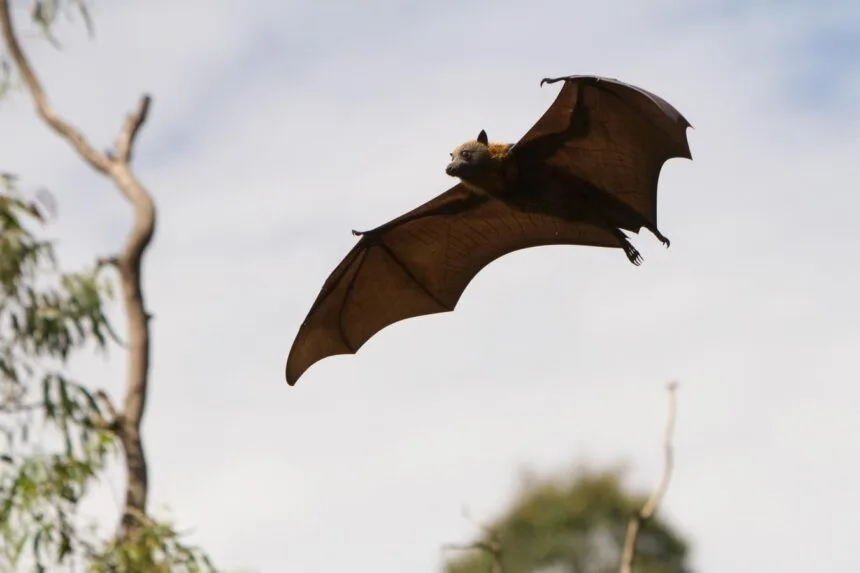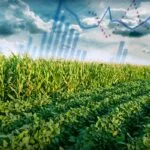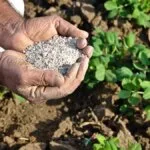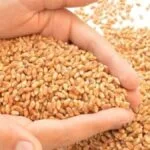Main Points In Hindi (मुख्य बातें – हिंदी में)
-
जलवायु परिवर्तन और फंगल बीमारी का प्रभाव: अमेरिकी कृषि और संबंधित उद्योग, जिसकी आर्थिक वैल्यू 1.53 ट्रिलियन अमेरिकी डॉलर है, जलवायु परिवर्तन, पवन ऊर्जा, और चमगादड़ों को प्रभावित करने वाली फंगल बीमारी (व्हाइट-नोज़ सिंड्रोम) के कारण गंभीर खतरों का सामना कर रहे हैं। यह बीमारी चमगादड़ों की आबादी को तेजी से खत्म कर रही है।
-
चमगादड़ों की कृषि में भूमिका: चमगादड़ कृषि के लिए महत्वपूर्ण हैं क्योंकि वे कीड़ों को खा कर फसल के नुकसान को कम करते हैं। उनके संरक्षण का आर्थिक महत्व अमेरिकी भूवैज्ञानिक सर्वेक्षण के अनुसार 3.7 बिलियन से 53 बिलियन डॉलर के बीच है, जो उनकी परागण भूमिका और अन्य पारिस्थितिक सेवाओं को ध्यान में नहीं रखते हुए है।
-
समाज को लाभ: चमगादड़ न केवल कीड़ों को नियंत्रित करते हैं, बल्कि वे फल और सब्जियों के परागण में भी महत्वपूर्ण भूमिका निभाते हैं, जिससे विविध फसलों और खाद्य उत्पादों का उत्पादन होता है, जैसे कोको और टकीला के लिए एगेव।
-
मृत्यु दर के कारण: जलवायु परिवर्तन, अत्यधिक मौसम की घटनाएं, और पवन टरबाइन जैसी मानव-निर्मित खतरों के कारण उत्तरी अमेरिकी चमगादड़ों की मृत्यु दर बढ़ रही है। पवन टरबाइन की गति के कारण सालाना हजारों चमगादड़ मारे जाते हैं।
- संरक्षण प्रयास और तकनीकी नवाचार: वैज्ञानिक नई तकनीकों, जैसे ध्वनिक बैट डिटेक्टर, ट्रैकिंग नैनोटैग्स, और 3डी प्रिंटिंग का उपयोग कर रहे हैं ताकि चमगादड़ों की देखभाल एवं संरक्षण किया जा सके, जिससे उनकी आबादी को सुरक्षा मिल सके और कृषि उद्योग को अनुकूलित किया जा सके।
Main Points In English(मुख्य बातें – अंग्रेज़ी में)
Here are the main points from the provided text about bats and their contribution to agriculture and the challenges they face:
-
Economic Contribution of Bats: Bats play a significant role in agriculture by consuming insects, which helps reduce crop damage and the need for pesticides. Their annual economic value to the U.S. agricultural industry is estimated between $3.7 billion and $53 billion, highlighting their importance to food production.
-
Impact of Climate Change and Diseases: Bats face increasing threats from climate change, a fungal disease known as White-nose syndrome, and the dangers posed by wind turbines. These factors have led to a decline in bat populations, with expectations of a 52% decrease in North American bat populations over the next 15 years.
-
Bats’ Ecological Benefits: In addition to pest control, bats are crucial for the pollination of over 300 plant species, including crops like cocoa and agave, which are vital to industries such as chocolate production and tequila.
-
Technological Innovations in Conservation: Advanced technologies such as acoustic detectors, mist nets, nanotracking devices, and 3D printing are being utilized to monitor bat populations, study their behaviors, and develop methods to mitigate threats to their survival.
- Public Awareness and Conservation Efforts: There is a growing effort to raise public awareness about the ecological importance of bats and the challenges they face, alongside initiatives aimed at preserving bat populations and their habitats through conservation measures.


Complete News In Hindi(पूरी खबर – हिंदी में)
हवा में उड़ते फल वाले चमगादड़ का पास से चित्र।
1.53 ट्रिलियन अमेरिकी डॉलर की अमेरिकी कृषि और संबंधित उद्योगों को जलवायु परिवर्तन, पवन ऊर्जा और चमगादड़ों को नष्ट करने वाली एक फंगल बीमारी से अरबों के अल्पज्ञात खतरों का सामना करना पड़ रहा है, जो किसानों को कीड़े खाकर मदद करते हैं।
चमगादड़ फसल के नुकसान और कीटनाशकों के उपयोग को रोकते हैं क्योंकि वे कीड़ों को खा जाते हैं। कृषि उद्योग के लिए उनकी राष्ट्रीय “सेवा” का वार्षिक मूल्य सीमाबद्ध होने का अनुमान लगाया गया है $3.7 बिलियन से $53 बिलियन तकअमेरिकी भूवैज्ञानिक सर्वेक्षण के अनुसार, अमेरिकी आंतरिक विभाग की एक शाखा।
“हालांकि, यह मूल्य वन पारिस्थितिक तंत्र में चमगादड़ों द्वारा खाए गए कीड़ों की मात्रा और लकड़ी जैसे उद्योगों को किस हद तक लाभ पहुंचाता है, को ध्यान में नहीं रखता है। यह पौधे और फसल परागणकों के रूप में चमगादड़ों के महत्वपूर्ण महत्व को भी ध्यान में नहीं रखता है। इसलिए चमगादड़ों का वास्तविक मौद्रिक मूल्य प्रति वर्ष $3.7 बिलियन से कहीं अधिक है,” यूएसजीएस का कहना है।
अमेरिकी कृषि विभाग की आर्थिक अनुसंधान सेवा के अनुसार, 2023 में, अमेरिकी कृषि, खाद्य और संबंधित उद्योगों का सकल घरेलू उत्पाद $1.53 ट्रिलियन में 5.6% था। फार्म-जिनमें चमगादड़ों के उपभोग के लिए पर्याप्त कीड़े भी हैं-ने उस कुल में 203.5 बिलियन डॉलर का योगदान दिया।
चमगादड़ समाज को कैसे लाभ पहुँचाते हैं
भोजन और सब्जियों को चूर्णित करने वाले कीड़ों को खाने के अलावा, चमगादड़ पौधों को भी परागित करते हैं, जिससे फलों की 300 प्रजातियाँ पैदा होती हैं और कोको. एगेव को परागित करने के लिए टकीला प्रेमी उनके आभारी हैं।
“चमगादड़ और एगेव का परस्पर संबंध है. ऑस्टिन, टेक्सास के बैट कंजर्वेशन इंटरनेशनल का कहना है कि गर्भवती चमगादड़ों को एक बच्चे को जन्म देने के लिए मध्य मेक्सिको और अमेरिका के दक्षिण-पश्चिम के बीच अपनी वार्षिक प्रवासी यात्रा करने के लिए एगेव पौधों से मीठे अमृत की आवश्यकता होती है।
अमेरिकी अर्थव्यवस्था में चमगादड़ों द्वारा दिए गए ये योगदान संभवतः वैज्ञानिकों, चमगादड़ों के प्रति उत्साही और पर्यावरणविदों के समुदायों को छोड़कर कई लोगों के लिए अज्ञात हैं।
हालाँकि, आज उत्तरी अमेरिकी चमगादड़ों की गंभीर दुर्दशा अधिक ध्यान आकर्षित कर रही है।
चमगादड़ों के सामाजिक लाभों, मृत्यु के कारणों और संरक्षण प्रयासों के बारे में जनता को अधिक जानकारी जारी की जा रही है।
जलवायु परिवर्तन, फंगल रोग, पवन टरबाइन के कारण चमगादड़ों की मृत्यु दर बढ़ रही है
गुफाओं में आश्रय पाने के बावजूद, चमगादड़ों का जीवन गंभीर मौसम की घटनाओं से खतरे में पड़ सकता है।
चमगादड़ बसेरा करते हैं. यह निकटता उन्हें तेजी से फैल रहे व्हाइट-नोज़ सिंड्रोम के प्रति संवेदनशील बनाती है … [+]
“तीव्र तूफ़ान और भारी बारिश से घरों में बाढ़ आ सकती है, जिससे गुफाओं या खदानों में फंसे चमगादड़ों की पूरी कॉलोनी मर सकती है। प्रारंभिक सीज़न की बर्फबारी और लंबे समय तक ठंडे तापमान के कारण भी चमगादड़ों की मृत्यु हो गई है, क्योंकि गुफाओं के प्रवेश द्वार बर्फ के बहाव और बर्फ से अवरुद्ध हो गए हैं, या हाइबरनेशन के दौरान चमगादड़ अपने घरों के भीतर जम कर मर गए हैं,” नोट किया गया राष्ट्रीय उद्यान सेवा एक स्पष्टीकरण में चमगादड़ों की मृत्यु दर को जलवायु परिवर्तन से जोड़ा गया है।
अत्यधिक गर्मी और जलवायु परिवर्तन से जुड़ी जंगल की आग भी चमगादड़ों को मार रही है जब उनके निवास स्थान नष्ट हो रहे हैं। चमगादड़ों को सूखे और उच्च तापमान से बचने में भी परेशानी हो सकती है। गर्म तापमान के परिणामस्वरूप उन पारंपरिक आवासों में प्रतिकूल परिवर्तन हो सकते हैं जहां चमगादड़ों ने प्रवास किया है।
उन्हें पवन टरबाइनों से अन्य खतरों का सामना करना पड़ता है, जिनके बारे में सोचा जाता है कि वे उत्तरी अमेरिका में हर साल हजारों प्रवासी वृक्ष चमगादड़ों को मार देते हैं। यह सिद्धांत दिया गया है कि जब चमगादड़ प्रवास और प्रजनन कर रहे होते हैं तो वे गलती से टरबाइन ब्लेड को पेड़ समझ लेते हैं क्योंकि गर्मियों और पतझड़ में टरबाइन के नीचे अधिक मृत चमगादड़ पाए जाते हैं। अमेरिकन विंड वाइल्डलाइफ इंस्टीट्यूट की 2018 की रिपोर्ट, जिसे “चमगादड़ और पवन ऊर्जा: प्रभाव, शमन और ट्रेडऑफ़” कहा जाता है, ने 2012 में अमेरिका और कनाडा में 90,000 से लगभग 400,000 चमगादड़ों की मृत्यु के लिए पवन टर्बाइनों को जोड़ने वाले एक दशक से अधिक पुराने अध्ययन पर चर्चा की। (उन मृत जानवरों में से लगभग 70% प्रवासी वृक्ष चमगादड़ थे।)
पवन टरबाइनों से आज चमगादड़ों की मृत्यु दर निस्संदेह संघीय सरकार के हालिया प्रोत्साहन और हरित ऊर्जा के लिए वित्त पोषण को देखते हुए बहुत अधिक है।
एक चमगादड़ को घातक व्हाइट-नोज़ सिंड्रोम बीमारी का मुकाबला करने के लिए एक प्रायोगिक टीका दिया जा रहा है … [+]
एक और खतरा तेजी से फैलने वाली फंगल बीमारी है जिसे केवल चमगादड़ ही पकड़ सकते हैं जिसे व्हाइट-नोज़ सिंड्रोम कहा जाता है जो चमगादड़ के थूथन, कान और पंखों को ख़राब कर सकता है। लगभग 17 साल पहले सामने आने के बाद से यह घातक बीमारी पूरे अमेरिकी चमगादड़ों का सफाया कर रही है।
तब से, 40 राज्यों में लाखों चमगादड़ इस बीमारी से मर गए हैं, माना जाता है कि यह बीमारी लोगों के कपड़ों और उपकरणों के साथ गुफाओं और खदानों में फैल गई थी।
श्वेत-नाक सिंड्रोम यह प्रत्येक चमगादड़ कॉलोनी को मार सकता है जहां इसे पेश किया जाता है। नतीजतन, सरकारी अधिकारी इस बीमारी को अन्य क्षेत्रों में फैलने से रोकने की कोशिश कर रहे हैं और गुफा आगंतुकों को प्रभावित राज्यों और आसपास के लोगों से दूर रहने की चेतावनी दे रहे हैं।
ये चमगादड़ की बीमारी है कैलिफोर्निया में अब तेजी से फैल रहा है 2023 में हम्बोल्ट काउंटी में पाए जाने के बाद।
चमगादड़ों के खतरों का विश्लेषण करने और संरक्षण के माध्यम से घटती आबादी को कैसे संतुलित किया जाए, यह निर्धारित करने के लिए कई प्रयास किए जा रहे हैं। एक उल्लेखनीय उदाहरण उत्तरी अमेरिकी चमगादड़ संरक्षण गठबंधन द्वारा 2023 में प्रकाशित पहली “चमगादड़ों की स्थिति रिपोर्ट” है। रिपोर्ट में अनुमान लगाया गया है कि आने वाले 15 वर्षों में उत्तर अमेरिकी चमगादड़ों की 52% आबादी में महत्वपूर्ण कमी आने की संभावना है।
कैसे परिष्कृत तकनीक चमगादड़ों की मदद करती है
यूएसजीएस ने अनावरण किया है 10 उपकरण इसके चमगादड़ जीवविज्ञानी चमगादड़ संरक्षण प्रयासों के लिए वैज्ञानिक समाधान बनाने के लिए उन्नत तकनीक का उपयोग कर रहे हैं, जिससे अर्थव्यवस्था, विशेष रूप से कृषि उद्योग को लाभ होगा। इसमे शामिल है:
- ध्वनिक बैट डिटेक्टर-जानवरों की उच्च-आवृत्ति कॉल को कंप्यूटर के माध्यम से परिवर्तित करना ताकि लोग आदतों और आबादी के बारे में अधिक जानने के लिए ध्वनि सुन सकें।
कैलिफोर्निया में चमगादड़ों पर नज़र रखने के लिए एक अध्ययन के तहत जीवविज्ञानियों ने चमगादड़ों को पकड़ने के लिए एक ट्रिपल-हाई मिस्ट नेट स्थापित किया … [+]
- धुंध जाल – पानी के ऊपर पतले जाल लगाना जहां चमगादड़ जानवरों को पकड़ने और मूल्यांकन के लिए छोड़ने के लिए कीड़े पीते और खाते हैं।
योसेमाइट नेशनल पार्क में चमगादड़ों के अध्ययन के एक भाग के रूप में नैनो ट्रांसमीटर के साथ कैलिफोर्निया का एक चमगादड़।
- नैनोटैग्स – व्हाइट-नोज़ सिंड्रोम को ट्रैक करने और अपतटीय पवन ऊर्जा की योजना बनाने के लिए कैलिफोर्निया और वाशिंगटन में “बारिश की बूंद के बराबर” वजन वाले ट्रैकिंग ट्रांसमीटरों का उपयोग किया जाता है।
- जीन एडिटिंग बायोसेंसर – चमगादड़ की त्वचा को पोंछकर व्हाइट-नोज़ सिंड्रोम के रोगज़नक़ का पता लगाने के लिए एक तकनीक को लोगों के उपयोग से वन्यजीवों के लिए स्थानांतरित करना।
यूएसजीएस वैज्ञानिक पॉल क्रायन के पास 3डी-प्रिंटेड बैट टूल है। वह डिजाइन, परीक्षण आदि के लिए 3डी प्रिंटिंग का उपयोग कर रहा है … [+]
- 3डी प्रिंटिंग-चमगादड़ों के लिए ऑडियो और वीडियो रिकॉर्डिंग डिवाइस बनाने और उपयोग करने की लागत कम करना।
- थर्मल कैमरे – वैज्ञानिकों को गर्मी-संवेदन इमेजरी के माध्यम से उनकी अंधेरी गुफाओं में चमगादड़ों की गतिविधियों को “देखने” में सक्षम बनाते हैं।
- इंटरएक्टिव पवन टरबाइन डेटाबेस – पवन टरबाइन स्थानों के साथ चमगादड़ डेटा को ओवरलैप करना जो चमगादड़ प्रवास के मौसम के दौरान टरबाइन की गति को धीमा करने जैसे तरीकों से चमगादड़ की घातकता को कम कर सकता है।
बेन लोहरे, एक यूएसजीएस कंप्यूटर वैज्ञानिक, और एंड्रिया शुहमैन, एक यूएसजीएस जीवविज्ञानी, ध्वनिक का परीक्षण करते हैं … [+]
चमगादड़ों के खतरों के बावजूद, उनके जीवित रहने की दर तब बढ़ सकती है जब न केवल अर्थव्यवस्था में उनके योगदान के बारे में अधिक जानकारी प्राप्त हो, बल्कि यह भी पता चले कि विज्ञान और प्रौद्योगिकी का उपयोग करके उन्हें कैसे बचाया जा सकता है।
Complete News In English(पूरी खबर – अंग्रेज़ी में)
A close-up image of a bat with fruit flying in the air.
Getty
The U.S. agriculture and related industries, valued at $1.53 trillion, face unknown threats from climate change, wind energy, and a deadly fungal disease that affects bats, which help farmers by eating insects.
Bats help reduce crop loss and the use of pesticides by consuming insects. The estimated annual value of their national “service” to the agriculture industry is between $3.7 billion and $53 billion, according to the U.S. Geological Survey, a branch of the U.S. Department of the Interior.
“However, this value does not account for the extent to which bats benefit industries like timber, nor does it recognize the important role bats play as pollinators for plants and crops. Therefore, the true monetary value of bats is likely much greater than $3.7 billion per year,” says the USGS.
According to the U.S. Department of Agriculture’s Economic Research Service, in 2023, the gross domestic product for U.S. agriculture, food, and related industries was $1.53 trillion, with farms contributing $203.5 billion to that total.
How Bats Benefit Society
In addition to eating insects that damage food and vegetables, bats also pollinate plants, leading to the growth of 300 species of fruits and cocoa. Tequila lovers appreciate them for pollinating agave.
“Bats have a mutual relationship with agave. According to Bat Conservation International in Austin, Texas, pregnant bats require sweet nectar from agave plants to complete their annual migration between central Mexico and the southwestern U.S. to give birth to their young.
The contributions bats make to the U.S. economy are likely unknown to many, except for scientists, bat enthusiasts, and environmentalists.
However, the serious plight of North American bats is gaining more attention today.
More information is being released to the public about the social benefits of bats, reasons for their decline, and conservation efforts.
Climate Change, Fungal Diseases, and Wind Turbines Increase Bat Mortality Rates
Even with caves for shelter, bats’ lives can be endangered by severe weather events.
Bats roost in caves, which makes them vulnerable to rapidly spreading white-nose syndrome … [+]
Alan Kresler, U.S. Geological Survey
“Intense storms and heavy rainfall can lead to flooding of roosting areas, resulting in the deaths of entire bat colonies trapped in caves or mines. Early snowfalls and prolonged cold temperatures can also kill bats as cave entrances get blocked by snow or bats may freeze to death in their hibernation sites,” noted the National Park Service in a report linking bat mortality to climate change.
Extreme heat and wildfires associated with climate change are also killing bats as their habitats are destroyed. Bats may also struggle to escape droughts and high temperatures. Rising temperatures can lead to adverse changes in traditional habitats where bats migrate.
They face additional dangers from wind turbines, which are believed to kill thousands of migratory tree bats in North America every year. It is theorized that when bats are migrating and breeding, they mistake turbine blades for trees, leading to their deaths during the summer and autumn when more dead bats are found beneath turbines. A 2018 report from the American Wind Wildlife Institute, titled “Bats and Wind Energy: Impacts, Mitigation, and Trade-offs,” discussed old studies linking wind turbines to the deaths of about 90,000 to nearly 400,000 bats in the U.S. and Canada by 2012. (About 70% of those deaths were migratory tree bats.)
Today, the death rates of bats from wind turbines are undoubtedly even higher, given recent federal incentives and funding for green energy.
A bat is being given an experimental vaccine to combat deadly white-nose syndrome … [+]
Tony Rock, research epidemiologist, National Wildlife Health Center
Another threat is a rapidly spreading fungal disease called white-nose syndrome, which can damage bats’ noses, ears, and wings. Since its emergence about 17 years ago, this deadly disease has wiped out large numbers of bats across the U.S.
Since then, millions of bats have died from this disease in 40 states. It is believed the disease spread into caves and mines on clothing and equipment.
White-nose syndrome can kill entire bat colonies where it is introduced. As a result, government officials are working to prevent the disease from spreading to other regions and are warning cave visitors to stay away from affected states and surrounding areas.
This bat disease is rapidly spreading in California after being found in Humboldt County in 2023.
Many efforts are underway to analyze the threats to bats and determine how to balance declining populations through conservation. A notable example is the first “State of the Bats Report” published in 2023 by the North American Bat Conservation Coalition. The report estimates that there is a significant chance that 52% of North American bat populations will decline in the next 15 years.
How Advanced Technology is Helping Bats
The USGS has unveiled 10 tools that bat biologists are using advanced technology to create scientific solutions for bat conservation efforts, benefiting the economy, especially agriculture. These include:
- Acoustic bat detectors — devices that convert the high-frequency calls of bats into sounds that people can listen to in order to learn more about bat habits and populations.
Biologists have set up a triple high mist net to capture bats as part of a study in California … [+]
Austin Wagg, U.S. Geological Survey Western Ecological Research Center
- Mist nets — thin nets placed over water where bats catch insects and feed to capture and assess the bats.
A California bat equipped with a nano-transmitter as part of a study in Yosemite National Park.
Austin Wagg, U.S. Geological Survey Western Ecological Research Center
- Nano-tags — tracking transmitters that weigh the same as a raindrop used in California and Washington to track white-nose syndrome and plan for offshore wind energy.
- Gene editing biosensors — a technique to detect the pathogens of white-nose syndrome by swabbing bat skin and transferring the technology from humans to wildlife.
USGS scientist Paul Cryan has a 3D-printed bat tool. He is using 3D printing to design and test … [+]
Elly Weil, U.S. Geological Survey
- 3D printing — reducing the cost of creating and using audio and video recording devices for bats.
- Thermal cameras — allowing scientists to “see” bat activity in their dark caves using heat-sensitive imagery.
- Interactive wind turbine database — overlaying wind turbine locations with bat data to reduce bat fatalities during migration seasons by slowing turbine speeds.
Ben Lohre, a USGS computer scientist, and Andrea Schuhmann, a USGS biologist, are testing acoustic devices … [+]
Frankie Torsley, U.S. Geological Survey
Despite the dangers bats face, their survival rates may improve as more information is gained about their contributions to the economy, and as we learn how science and technology can be used to protect them.


 By
By 





